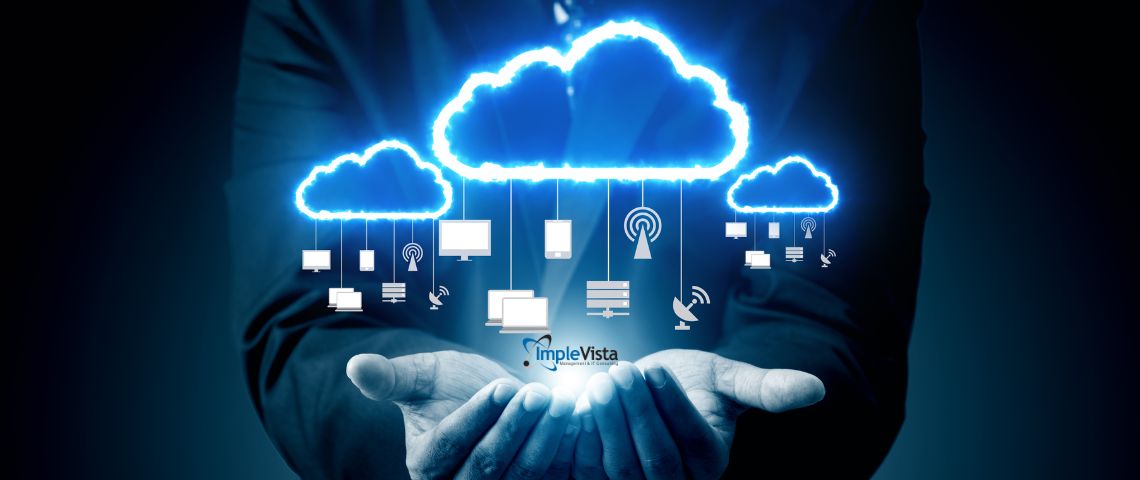As businesses digitize and expand their IT operations, addressing the environmental impact of technology is more important than ever. Data centers alone consume roughly 1–2% of global electricity, and the entire information and communications technology (ICT) sector is responsible for an estimated 1.5–3.9% of global greenhouse gas emissions.
Green technology, or Green IT, focuses on creating and using computing resources in environmentally sustainable ways. Sustainable IT strategies seek to minimize this impact by optimizing hardware and software design, operation, and disposal.
In practice, green technology encompasses many approaches: from highly efficient, renewable-powered data centers and cloud services to reduced e‑waste and energy-saving office policies. These methods not only shrink a company’s carbon footprint but can also lower costs and improve brand reputation.
In Bangladesh, government initiatives like “Digital Bangladesh” and the Smart Bangladesh 2041 vision promote paperless services and digital solutions – goals closely aligned with global sustainable IT practices. This article explores key green tech practices — including data center efficiency, cloud computing, renewable energy, and e-waste management — that can make IT more sustainable and businesses more competitive.

What Are Green Technology and Sustainable IT?
Green technology (often called Green IT or green information technology) refers to using computers and electronic devices in energy-efficient, eco-friendly ways. For example, TechTarget defines green IT as “the practice of creating and using environmentally sustainable computing resources”.
Sustainable IT is a broader approach that “aims to minimize the environmental impact of IT operations and their contribution to climate change”. In practice, these concepts mean designing, manufacturing, using, and disposing of hardware in ways that reduce waste and energy use. Together, green IT practices cover everything from efficient servers and cooling to responsible recycling.
Why it matters: Green IT is crucial because technology’s footprint is large and growing. The ICT sector’s energy use and emissions are rising, and rapid device turnover creates mountains of e-waste. Green IT addresses these issues. For example, TechTarget notes that enterprise IT emits significant greenhouse gases and produces toxic electronic waste, so green IT “can be a useful part of broader climate strategies”.
Companies face pressure from regulators and customers to reduce energy use and waste; adopting green IT helps with compliance and ESG goals. Moreover, efficient operations often cut energy bills (e.g. using energy-saving servers or power modes) and bolster a company’s reputation for responsibility.
- Energy and emissions: IT systems and data centers use vast amounts of electricity. In 2022 data centers consumed ~460 TWh (about 2% of the world’s electricity).
- E-waste: Over 50 million metric tons of electronic waste are generated globally each year, only about 20% of which gets recycled.
- Regulation & reputation: Governments and consumers now demand greener practices. Green IT initiatives help companies meet environmental regulations and improve their brand image.
Overall, green technology is not just good for the planet – it has become a business imperative. Organizations that cut IT energy use and waste can lower costs and risks, and appeal to environmentally conscious stakeholders.
How to Reduce Energy Consumption in Data Centers with Green IT
Data centers are among the most energy-hungry components of IT. Adopting green technology here can yield big gains in efficiency. Practical steps include:
- Optimize cooling: Use hot/cold aisle containment, free-air or liquid cooling, and precision HVAC controls. Even a few degrees of warmer ambient temperature (within safe limits) can save large amounts of power. Advanced cooling techniques – such as using outside air (“free cooling”) or coolant-based servers – reduce the energy needed for fans and chillers.
- Upgrade hardware: Modern, energy-efficient servers and components can substantially lower power draw. Look for servers with high-efficiency power supplies and CPUs/GPUs designed for low energy use. Energy-efficient hardware not only consumes less electricity but also generates less heat, further cutting cooling needs.
- Virtualization and consolidation: Run multiple virtual machines on each physical server to maximize utilization. Virtualization lets you consolidate workloads so that fewer physical servers are needed. This reduces idle machines and idle power. As one source notes, cloud and virtualization technologies reduce the need for extra hardware and idle power.
- Power management: Enable power-saving modes on servers and storage. Use software tools to automatically put idle equipment into low-power sleep states. For example, operating systems and firmware can spin down disks or throttle CPUs when not in use. Small measures like smart power strips can eliminate “vampire” power drain from devices that draw power even when off.
- Renewable energy: Whenever possible, power data centers with clean energy. Many tech companies now aim for 100% renewable data centers. Installing solar panels, contracting wind energy, or buying green power offsets can cut the carbon footprint drastically. For example, a commitment to renewables means a data center may run on solar or wind instead of grid carbon.
By combining these strategies, organizations can dramatically cut data center power use. Monitoring is key: track metrics like Power Usage Effectiveness (PUE) to measure efficiency. Industry best practices (such as the DOE’s Data Center Efficiency guidelines) recommend continuous monitoring of PUE and regular audits to find new savings. Over time, even small percentage gains in efficiency can translate to major cost and emission reductions.
Green IT Strategies to Reduce Data Center Energy Consumption
Newer approaches can yield further improvements. Cloud migration is one such strategy: public cloud providers operate at massive scale and often have better PUE than on-premises centers. Moving workloads to a cloud provider (or to a highly optimized private cloud) can leverage their efficiency and renewable usage. Likewise, containerization and serverless architectures ensure that servers run only when needed, avoiding idle resources.
In short, every kilowatt saved in the data center lowers both costs and carbon. By implementing energy-efficient cooling, hardware, and automation – and by shifting to cloud and virtualization – companies reduce energy consumption in data centers while maintaining performance.

Cloud Computing and Virtualization
Modern cloud services and virtualization platforms are inherently more energy-efficient than legacy on-site infrastructure. Cloud providers consolidate many customers on shared hardware, which reduces per-tenant energy waste. When businesses adopt Infrastructure-as-a-Service or Platform-as-a-Service, they often take advantage of the provider’s economies of scale: cloud data centers tend to run cooler, use virtualization heavily, and increasingly rely on renewables.
Virtual machines (VMs) pack more workloads onto each server. IBM notes that virtualization “allows multiple virtual machines to run on one server, reducing extra hardware” – meaning fewer servers drawing power. In practice, migrating applications and services to the cloud or a virtualized private data center can significantly cut hardware needs. It also means that as the business grows, it need not manufacture and power new servers on-site (reducing embedded emissions).
Cloud computing also enables scaling: resources spin up during peak demand and spin down during lulls. This dynamic scaling avoids the inefficiency of 24/7 idle servers. In essence, cloud and virtualization are among the most potent green IT tools – they boost utilization, improve PUE, and often provide renewable energy by default.
Sustainable Software and Operations
Green IT extends to the software and processes running on hardware. Efficient software design means writing code that does not waste CPU cycles, disk I/O, or network calls. IBM highlights “sustainable software development” practices: for example, avoiding unnecessary loops or redundant processes can reduce compute time and energy use. Using common libraries and modular code (rather than duplicating functions) also cuts runtime energy.
Operational practices matter too. Regularly patching and updating applications can improve performance and efficiency (newer versions often have optimizations). Services should be turned off or scaled down during off-hours. Tools such as container orchestrators (e.g. Kubernetes) can automate this scaling.
Adopting DevOps practices that emphasize lightweight containers or serverless functions ensures that computing resources are used only when needed. All of these measures mean fewer wasted CPU cycles and lower overall power draw.

E-Waste Recycling and Lifecycle Management
Electronic waste is a major concern of sustainable IT. Every year, an estimated 54 million metric tons of e-waste are generated globally. Old servers, workstations, cables, and accessories contain valuable metals – but also toxic materials like lead and mercury. Green IT mandates responsible handling of this waste.
- Extend Device Lifetimes: Choose modular, repairable hardware. By designing for longevity (modular laptops/desktops, field-replaceable parts), organizations can avoid frequent replacements. For example, some vendors offer upgradeable workstations so that only the CPU, RAM or storage need replacing, rather than the whole device.
- Refurbish and Reuse: Before disposing of equipment, explore refurbishment. Functional units can be redeployed to less demanding roles or donated. This keeps working electronics in use longer and delays e-waste generation. TechTarget notes that reusing equipment is both environmentally friendly and often cheaper in the long run.
- Certified Recycling: When devices do reach end-of-life, recycle them through certified programs. This ensures valuable metals (gold, copper, rare earths) are recovered and hazardous substances are handled safely. As one source advises, partner with reputable e-recyclers and strictly avoid landfilling electronics.
- Follow Regulations: Stay compliant with local e-waste laws. For example, Bangladesh produces over 3 million metric tons of e-waste per year, prompting a 2021 E-Waste Management Rule and targets for collection and recycling. Supporting these initiatives (e.g. take-back programs, circular economy models) is a key green IT practice.
By focusing on the full hardware lifecycle – from procurement to disposal – companies can drastically reduce their digital footprint. Responsible e-waste management not only prevents environmental damage, but often enables recovery of materials and cost savings on raw resources.
Businesses can also adopt digital workflows to cut paper waste and streamline operations. For example, implementing a digital archiving system lets organizations store and retrieve documents electronically. This transition to a paperless office saves money on printing and filing, and it “decreases paper consumption, contributing to ecological sustainability”.
Implevista’s solutions, for instance, help Bangladesh enterprises go paperless, aligning with national goals for digital governance. Embracing such tools is a practical green IT move – it eliminates physical waste and often enhances efficiency.
Everyday Green IT Practices: Aside from infrastructure changes, many simple policies make a big difference. IT teams can enable power-saving modes on all equipment and use smart power strips to cut off idle power draw. It’s also wise to shut down non-critical servers overnight or during weekends.
Optimizing office environments helps too: for example, IoT sensors can automate lighting and heating, and Power-over-Ethernet (PoE) lighting allows lights to run on low-voltage Ethernet cable instead of separate power. Encouraging employees to unplug chargers, use laptops in “eco” mode, or simply turn off monitors after hours reduces wasteful energy use.
In short, sustainable IT can be practiced at all levels: from policies (“turn off unused monitors”) to purchase choices (Energy Star appliances). A focus on energy efficiency and waste reduction in daily IT operations not only saves money but also contributes to a company’s broader sustainability goals.
Transitioning to sustainable IT doesn’t have to be overwhelming. Implevista offers expertise and solutions to help you implement these green technology practices. Contact our team to discuss a strategy tailored to your needs – whether it’s optimizing your data center, moving to the cloud, or adopting paperless systems.
Check out our Cloud Engineering services for energy-efficient cloud migration, and explore our Digital Archiving solutions for paperless office management. Subscribe to the Implevista blog for more insights, and read our related post on Sustainable and Ethical Digital Marketing for additional tips on greening your technology.

FAQ
What is green technology?
Green technology (or Green IT) refers to using computers, devices, and networks in environmentally sustainable ways. This includes energy-efficient hardware, renewable-powered data centers, and software designed to minimize power use. The goal is to reduce carbon emissions and waste from IT operations.
What is sustainable IT?
Sustainable IT is an approach to managing technology that minimizes environmental impact throughout the IT lifecycle. This includes designing, using, and disposing of equipment in eco-friendly ways. It covers practices like energy-efficient data centers, green data management, and strict e waste recycling programs.
How can data centers reduce energy consumption with green IT?
Data centers can cut energy use by optimizing cooling, using high-efficiency servers, consolidating servers through virtualization, and implementing power management software. Additional strategies include leveraging cloud hosting (sharing resources at scale) and switching to renewable energy. Together, these “green IT” measures can significantly lower electricity draw and carbon emissions from data centers.
What are examples of green technology practices?
Examples include using server virtualization, moving workloads to energy-efficient cloud services, installing solar panels for IT facilities, implementing smart building controls, and adopting paperless digital workflows. Another example is sustainable software development, where applications are written to use less computing power.
How can companies manage e-waste responsibly?
Companies should prioritize reuse and recycling. This means upgrading or repairing devices to extend their life, refurbishing equipment, and using certified e waste recyclers at end-of-life. They should also design IT procurement policies to buy recyclable, non-toxic hardware. Many regions now have e waste regulations; following these rules and supporting take-back programs ensures responsible disposal.
How does cloud computing support sustainability?
Cloud computing often improves energy efficiency. Large cloud providers optimize data center operations and increasingly use renewable energy. By migrating workloads to the cloud, businesses reduce the need to run their own servers 24/7. The shared infrastructure allows better utilization of hardware, which lowers per-unit energy use compared to smaller on-site systems.
What is virtualization and why is it important for green IT?
Virtualization lets multiple virtual servers run on one physical server. This consolidation means fewer idle machines and less hardware to power and cool. Virtual machines and containers improve resource utilization, often cutting data center energy use by 30% or more. It’s a core green IT strategy for reducing hardware footprint and boosting efficiency.
What are sustainable software development practices?
Sustainable software development involves writing code that is efficient and minimizes computing power. This includes removing inefficient loops, avoiding redundant processes, and using algorithms that require less CPU time. It also means leveraging services like serverless functions or autoscaling so that software only uses resources when needed.
How can I make my office IT greener?
Simple steps include enabling power-saving modes on PCs and monitors, turning off idle equipment, and using energy-efficient office devices. Implementing digital document management and archiving (going paperless) cuts paper waste. You can also use IoT sensors and smart thermostats to optimize lighting and heating, and choose sustainably manufactured devices.
What certifications or standards support green IT?
Various programs certify sustainable IT products, such as Energy Star for energy-efficient electronics. There are also data center standards like LEED or Green Grid’s PUE certification for efficiency. Globally, many companies report their green IT efforts under ESG (Environmental, Social, Governance) frameworks. Adhering to recognized standards or certifications helps ensure your practices meet industry benchmarks.




